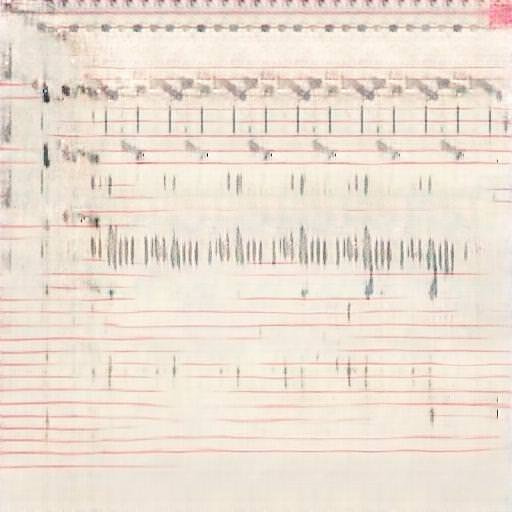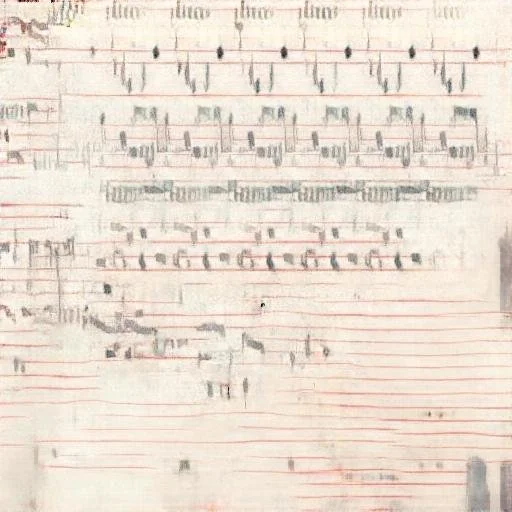Scribe: Medieval polyphony meets machine learning
by Mark Dyer
This year, I’ve been working on Scribe, a multidisciplinary project that encompasses palaeography, machine learning, transcription and performance. The outcome is a new choral work written for EXAUDI vocal ensemble. In a series of blogposts, I’ll be describing the project and my collaborative, creative processes.
Scribe brings together notated polyphony of the medieval era and machine learning image processing. Specifically, I employ a neural network to sample the ‘Old Hall Manuscript,’ British Library Add. MS 57950, and generate new images based on its learning. Similar to Jennifer Walshe’s A Late Anthology of Early Music (2020), I ask how these distant technologies might intertwine and convey new meanings.
The composition of ancient manuscripts often relied upon chaotic histories of addition and erasure. By using machine learning to destabilize the digitized copies of the Old Hall MS, I hope to continue a history of transformation, equivalent to the amendments made by the manuscript’s scribes, antiquarian revisionists and vandals.
Owing to its chronological placement within mensural notation development, the notation of the Old Hall MS is simultaneously coherent yet ambiguous. I see the manuscript and its notation as a liminal creative space, within which I can both adhere to historic rules and make daring artistic decisions.
See the original image Folio 12v of the Old Hall Manuscript (British Library Add. MS 57950) on the British Library website: https://www.bl.uk/learning/timeline/external/oldhall.jpg
In order to train my machine scribe, I collaborated with software engineer Dr Christopher Melen at the Royal Northern College of Music Centre for Practice & Research in Science & Music (PRiSM). We employed a Generative Adversarial Network (GAN), a form of deep learning, generative model typically used to process images. A GAN uses two neural networks, one generative and one discriminatory, in a comparison game. Having scanned and inferred the data, the two networks compete in a zero-sum game to generate increasingly authentic variations of the Old Hall MS.
The GAN completed 5,000 ‘epochs’ (training cycles) and generated 10,000 new images. In its early learning, the network produced repetitive grid structures reminiscent of the manuscript’s rigid staves.
Epoch 125
Gradually, the model added abstract figures which began to resemble notes of the mensural notational system.
Epoch 1050
By epoch 1500, images exhibit variation between systems.
Epoch 1585
By epoch 4000, we find instances of sophisticated notation that might pass as fragments from an authentic manuscript.
Epoch 4010
In my next post, I’ll describe how I make sense of these strange images and create a fiction of my own.
Videos of EXAUDI’s performances of the Marian Antiphons and Settings of the Mass by Marcel le Gan, edited by Mark Dyer are now online. Visit our page for Scribe to view them.




